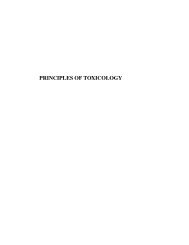Insect-pests - Biology East Borneo
Insect-pests - Biology East Borneo
Insect-pests - Biology East Borneo
Create successful ePaper yourself
Turn your PDF publications into a flip-book with our unique Google optimized e-Paper software.
28 <strong>Insect</strong> Pests and Diseases of Major Plantation Species<br />
4.13. Koompassia species<br />
Indonesian common name: Kempas<br />
The leguminous Koompassia spp. are characteristic<br />
associates of dipterocarp forests in the lowlands and<br />
lower hills. The three Indonesian species are<br />
Koompassia excelsa and K. malaccensis in Sumatra<br />
and Kalimantan and K. grandiflora in Irian Jaya. The<br />
dominant Koompassia trees in the upper storey are<br />
well known for sustaining the combs of the wild<br />
honeybee, Apis dorsata. The timber is durable and is<br />
used for a variety of purposes, including railway<br />
sleepers, flooring and furniture. Koompassia spp. in<br />
natural forests are now protected from cutting and<br />
the Ministry of Forestry and Estate Crops is<br />
encouraging the forest concessionaires to raise<br />
plantations of these species. Plantations have been<br />
established in Central Kalimantan.<br />
<strong>Insect</strong> <strong>pests</strong><br />
No information is available on <strong>pests</strong> of the living tree.<br />
Diseases<br />
No information is available on diseases of the living<br />
tree.<br />
Threat assessment<br />
Koompassia spp. appear to be free of <strong>pests</strong> and diseases<br />
but the plantation history is too short to draw valid<br />
conclusions.<br />
4.14. Maesopsis eminii<br />
Indonesian common name: Kayu afrika, Misopsis<br />
Maesopsis eminii (Rhamnaceae), a native of tropical<br />
Africa, was introduced into Java in 1920s and grown<br />
in home gardens. It has a light, general-purpose timber.<br />
Plantations have been raised in Sumatra.<br />
<strong>Insect</strong> <strong>pests</strong><br />
No insect <strong>pests</strong> have been recorded.<br />
Diseases<br />
No diseases have been recorded.<br />
Threat assessment<br />
In Uganda, a canker, caused by Fusarium solani was<br />
described in young trees growing stunted in poor soil<br />
(Schabel and Latiff 1993). There is no threat of <strong>pests</strong><br />
and diseases to this species that has been grown<br />
successfully for a long time in agroforestry systems<br />
in Java.<br />
4.15. Mangrove species<br />
Indonesian common name: Mangrove<br />
Natural mangrove forests are common along the very<br />
long Indonesian coastline. Plantations have been raised<br />
mainly to restore the natural vegetation in heavily<br />
degraded areas, to prevent coastal erosion, to facilitate<br />
coastal fisheries and to protect swamps. The<br />
commonly planted species are in the genera Avicennia,<br />
Bruguiera, Rhizophora and Sonneratia. Large<br />
plantations have been raised only in Java, while local<br />
people have undertaken small-scale planting in Bali and<br />
other places. Nearly 50 000 ha of plantations of<br />
Rhizophora spp. have been established in West and<br />
Central Java (Perum Perhutani 1995).<br />
<strong>Insect</strong> <strong>pests</strong><br />
The most common <strong>pests</strong> of mangroves in Indonesia<br />
are scale insects that attach themselves to the shoots<br />
and feed on the plant sap, often causing the leaves to<br />
wilt. Two species have been recorded: Chionaspis<br />
sp. (Intari 1997) and Aulacaspis marina (Takagi and<br />
Williams 1998) (Table 4.7). The stem borer, Zeuzera<br />
conferta (Lepidoptera, Cossidae) and the twig borer,<br />
Xyleborus sp. (Coleoptera, Scolytidae) occur and in<br />
combination often infest nearly 50% of stems of<br />
Avicennia spp. (Hardi 1997). Other <strong>pests</strong>, noted<br />
occasionally, include an unidentified leaf-feeding<br />
beetle, which damaged up to 80% of 3-month-old<br />
seedlings (Intari 1986) and the bagworms,<br />
Acanthopsyche sp. (Intari 1982) and Pteroma<br />
plagiophleps (Sitepu and Suharti 1998). A notable,<br />
non-insect pest is the crab, Sesarma sp. that cuts off<br />
the tops of seedlings in the nursery and new<br />
outplantings, often causing considerable mortality<br />
(Intari 1988).
















